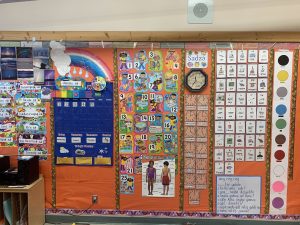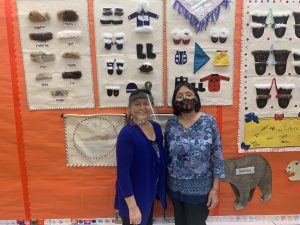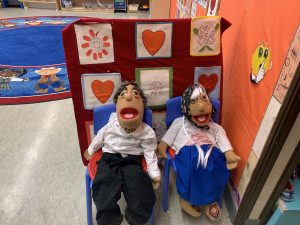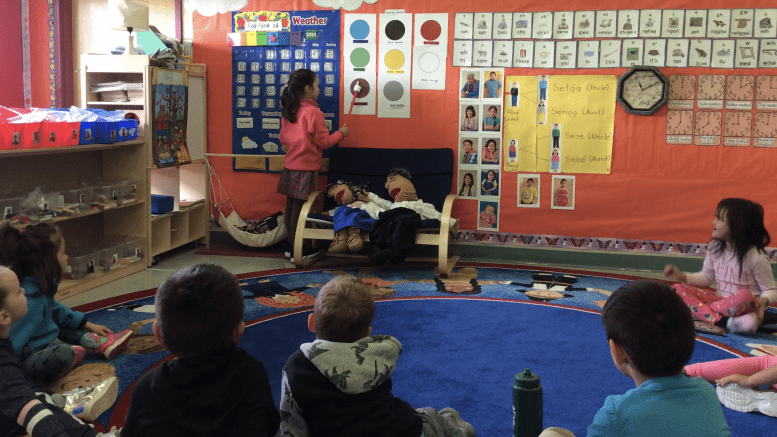Schools around the NWT are bringing Indigenous languages back into the classroom.
Ehtseo Ayha School in Délı̨nę launched its first Indigenous language program in September.
Brad Highfield, the school’s acting principal, says he realized the “dire need” to integrate language back into the curriculum after noticing the lack of competency in graduates.
The immersion program focuses on using the Sahtúot’ı̨nę Yatı̨́ (North Slavey) language in every aspect of the day including prayer, instruction and play, for six hours.

The immersion classroom is full of language resources, says Nackeinzo. ( Photo courtesy of Brad Highfield)
The response from the community and parents has been positive says Highfield: he has even noticed a significant change in behaviour from some of the students.
They are “totally engaged” in the program and it has even given the students a new appreciation for school, he says.
The kids actually want to come to school because they find learning the language fun, he adds.

Edith MacKeinzo and
Bernice Neyelle preparing for the day. (Brad Highfield)
Edith MacKeinzo, immersion teacher for the school, says she is surprised by how fast the students are picking up the language and using it amongst their peers.
“Im amazed by these kids,” she adds.
MacKeinzo says she already has everything she needs to teach her students and is excited to make language learning a priority again.
Highfield admits parents at first were hesitant to introduce Sahtúot’ı̨nę Yatı̨́ as the main language as opposed to English. However, parents bought into the idea fast after noticing the influence the program had on the students.
Highfield hopes by the end of the year they can review the program and extend it into the later grades.
The program currently teaches 10 Junior Kindergarten and Senior Kindergarten students.
This program is the product of the District Education Authority council and the Sahtu Divisional Education council.

Due to COVID-19 students cant touch the Elder dolls, but they help look after the classroom, says Nackeinzo (Photo courtesy of Brad Highfield)
GNWT makes ‘language learning a priority’ again
The GNWT announced its commitments to bringing traditional languages back into the classroom last week.
The territorial government says the Our Languages program will assist Indigenous language instructors with on-going supports and tools to better assist classrooms in languages from JK to grade 12.
“Languages can survive and will thrive when schools and communities join together to make language learning a priority,” says R.J.Simpson, minister of Education, Culture and Employment.
The GNWT has developed a set of resources, such as board games, posters and songs to assist in the teaching of the nine official Indigenous languages of the NWT.
Currently, just over 2,500 residents of the NWT can understand some Sahtúot’ı̨nę Yatı̨́.
Mariah Caruso is a digital journalist, originally from Toronto, Canada. She graduated from the University of Toronto with a Hons. Bachelor of Arts and completed her Journalism post-grad at Sheridan College. She has an insatiable appetite for life, storytelling, connecting to the people, and getting to the heart of the issue.
On her spare time, you can find her at your local coffee shop writing songs, poetry and prose or at the gym out-lifting men.
If you have a story idea, feel free to send her an email at mariah.caruso@cklbradio.com or call 867-766-2552 Ext 108





